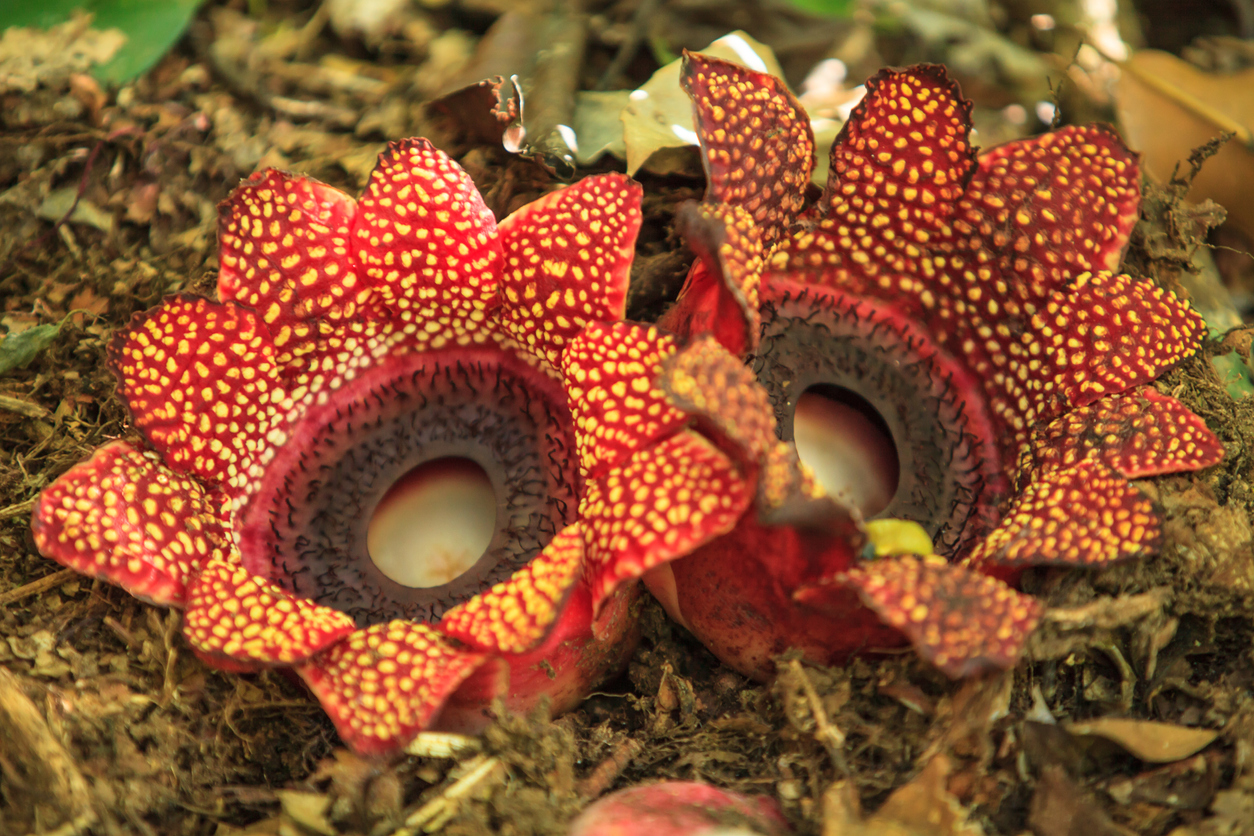
Smelly Parasitic Plant Lost About Half Its Genes, Stole Some from Hosts
February 17, 2021| |
The parasitic plant Sapria himalayana lost almost half of its genes commonly present in flowering plants and stole genes from other plants. This finding indicating genomic modifications that occurred naturally is published in Current Biology.
For most of its life, S. himalayana is almost invisible, lacking stems, leaves, and other common plant parts. It is composed of thin ribbons of parasitic cells twisting in the vines located in Southeast Asian forests until the flower starts to bloom. When it blooms, it does not only become very visible with a large-sized, bright-colored flower but also manifests its presence through its strong smell that resembles rotting flesh.
Evolutionary biologist Charles Davis from Harvard University, together with colleagues, sequenced millions of pieces of the parasitic plant's genome and found interesting peculiarities. First, they found that 44% of the genes present in flowering plants are lost in S. himalayana, which makes it similar to other parasitic plants. Furthermore, over 1 percent of S. himalayana's genome comes from the genes taken from its current or ancestral hosts.
Read more findings in Current Biology and Science News.
| |
You might also like:
- Parasitic Plants Get a Boost from Stolen Genes
- Researchers Discover Plant Without Chloroplasts
- NYU Prof Talks about Importance of Genome and Evolutionary Bio
Biotech Updates is a weekly newsletter of ISAAA, a not-for-profit organization. It is distributed for free to over 22,000 subscribers worldwide to inform them about the key developments in biosciences, especially in biotechnology. Your support will help us in our mission to feed the world with knowledge. You can help by donating as little as $10.
-
See more articles:
-
News from Around the World
- GM Crops' Benefits to Fight Climate Change May Be Underestimated Than Previously Documented
- International Team First to Successfully Stack Virus Resistance Plus Iron and Zinc Biofortification in a Non-Cereal Crop
- Canadians Link Gene Editing with GMOs, New Website on Gene Editing Launched
- Carnegie Scientists Uncover Nutrient Sensing Capabilities of Plants as Answer to Climate Change
- Plant Experts Tag Team against Asian Soybean Rust
- Breakthrough Research Finds Genes to Boost Hybrid Wheat Breeding
- 15-year Data Show GM Rapeseed, Soybean Do Not Affect Biodiversity in Japan
- Swedish Researchers Develop Biosensors to Boost Agri Production amidst Climate Change
- Research Identifies Best Gene to Provide Potatoes Resistance Against Late Blight
- Researchers Solve Riddle of Plant Immune System
-
Research Highlights
- Smelly Parasitic Plant Lost About Half Its Genes, Stole Some from Hosts
-
Plant
- PH S&T Department Poised to Develop NBT Guidelines
-
Read the latest: - Biotech Updates (December 17, 2025)
- Gene Editing Supplement (December 17, 2025)
- Gene Drive Supplement (February 22, 2023)
-
Subscribe to BU: - Share
- Tweet

